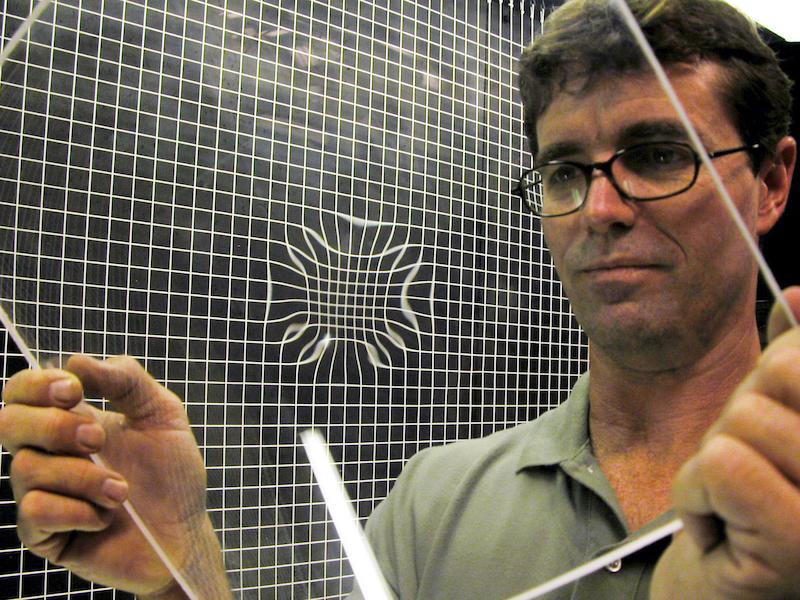Windscreen Distortions Can Affect Pilots’ Perception, Part 1

A refurbishment method utilized on the acrylic canopies of F-15 during maintenance at the Warner-Robbins AFB allows the acrylic canopies to be refurbished and returned to the aircraft as good as new.
Aircraft windscreen distortions can adversely affect a pilot’s perception of the height and distance from the runway, the airport and runway environment, terrain separation, and the aircraft’s deviation from the intended vertical or lateral flight path. Some distortions may be distracting, some cause headaches and nausea, and others cause false motion cues by changing the perception of objects outside of the cockpit.
These situations are particularly critical when transitioning from one’s focused instrument scan in IMC during an instrument approach to the visual references upon “breaking out and going visual,” or for helicopter pilots during maneuvers close to the ground in which they are completely reliant on undistorted images of the external environment. These powerful illusions can cause pilots to unconsciously modify the aircraft’s trajectory.
The optical quality of a windscreen is affected by manufacturing, material selection, maintenance, and environmental variables. Optical parameters are difficult to quantify, and there is subjectivity in the distinction between acceptable and unacceptable values for these parameters. Imperfections from manufacturing, abuse, mishandling, aircraft service, environment, exposure to inappropriate cleaning solvents, improper maintenance, poor material and poor repair techniques or failures of the windshield de-ice system can distort the optical quality of a windshield.
This article will discuss the types of distortions, the effects on a pilot’s ability to accurately see the outside environment, and recommendations on how to assess a windshield’s optical qualities to determine whether to write it up.
Windscreen Materials
The three materials primarily used in aircraft windshields are glass, acrylic and polycarbonate. Each have their own unique properties and special cleaning precautions that maintainers and pilots must follow. Failure to do so can either lead to compromised structural integrity and/or optical distortion, neither of which are tolerable for this critical component.
Glass windscreens are predominately used in large business aircraft and airliners, and have complex systems for de-icing and special hydrophobic surface coatings on the outer surface to repel rain. According to FAA Advisory Circular 25.771-1, “Windows and Windshields,” glass has good resistance to scratching and chemical attack, such as wiper action, solvents, and de-icing fluid. Another attribute of glass is that it exhibits no drastic changes when heated or cooled. This is an important attribute since rapidly climbing and descending jets will experience wide temperatures within a short time frame.
The disadvantages of glass include its variability in strength, the thickness tolerances and high notch sensitivity. In general, brittle materials such as glass tend to be sensitive to any stress concentration caused by a small notch or gouge that can lead to further crack development. An important aspect for pilots to keep in mind during pre-flight is that the strength of a glass panel is significantly decreased with any surface damage such as scratches, chips, or gouges.
Acrylic Windows
Acrylic windows are commonly used in light-to-medium business aircraft, both piston- and turbine-powered. Acrylics are soft yet tough in comparison to glass. Perhaps acrylics’ biggest advantage is the ability to be molded into complex curves.
Curved windshields are a particular challenge for manufacturers. Even with strict quality control the minutest difference within the formed product can create distortions. Evaluation of a curved windshield’s optical quality may involve the use of grid systems, lasers, and 3D maps. Different inspectors may legitimately come to different conclusions about a windshield’s optical quality.
“As-cast” acrylics are formed by pouring material into a mold and letting it harden with no external pressures. Molds are pre-shaped into the complex curves needed for the windshields on aircraft such as the Cessna Citation series and many helicopters. The biggest benefit is that acrylics have good forming characteristics and good outdoor weathering properties. The biggest limitation is that acrylics still exhibit some notch sensitivity (but not as much as glass).
A different manufacturing technique stretches the basic material to form the final window shape. Although stretching the acrylic material reduces the formability of the acrylic, stretched acrylics have less notch sensitivity which reduces crack propagation rates. Stretching also enhances resistance to crazing and improves tensile properties.
A seemingly miniscule flaw such as a slight thinning of the windshield in a small spot can cause a disparity between the vision seen by the right eye versus the left eye. A study of the optical characteristics of aircraft windshields by the Armstrong Aerospace Medical Research Laboratory at Wright-Patterson Air Force Base found that this disparity can cause eye strain, headaches, fatigue, suppression of the image from one eye, or double vision.
Another drawback of acrylics is crazing. Crazing appears as a fine web-like pattern of small scratches, often only detectable in the hangar by shining a flashlight into the window at an angle. These can be really hard to find as they very narrow and are usually less than .001 in. deep. Crazing isn’t apparent and has no effect on vision until the sun hits the windscreen at a particular angle and then micro-cracks essentially act like little mirrors reflecting sunlight directly into the pilot’s eyes.
Each speck of damage to the exterior surface scatters the light waves in all directions, making it increasingly difficult to see out of the windscreen. This is particularly troubling when flying into the sun, causing a significant loss of contrast of the exterior scene, which in turn leads to a severe visual impairment.
In Part 2 of this article, we discuss polycarbonate windscreens used on a wide range of helicopters and light aircraft.





